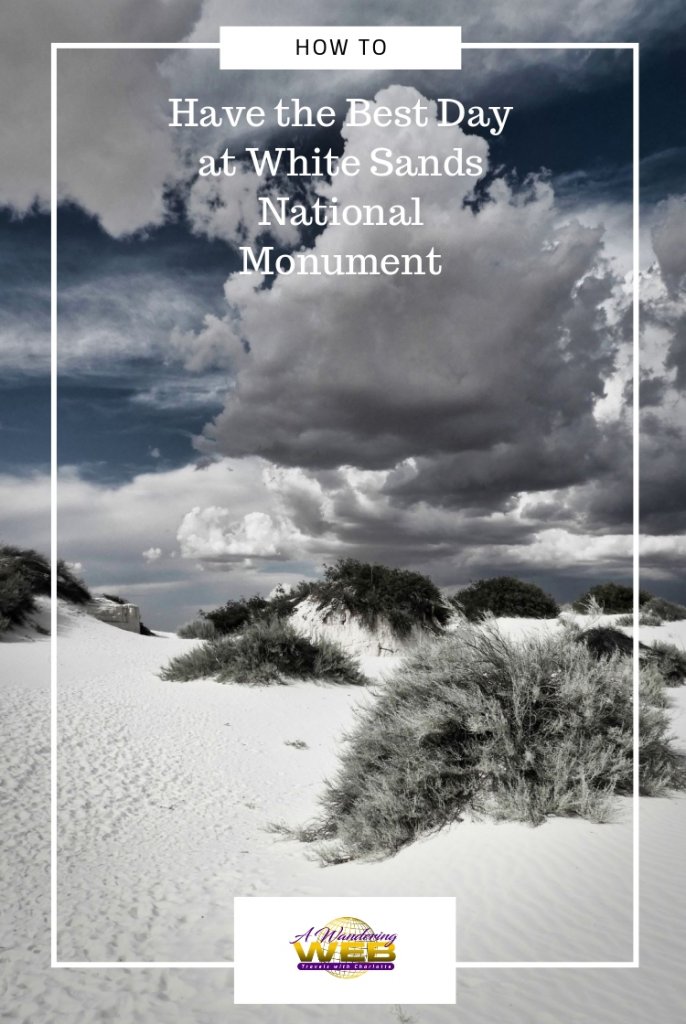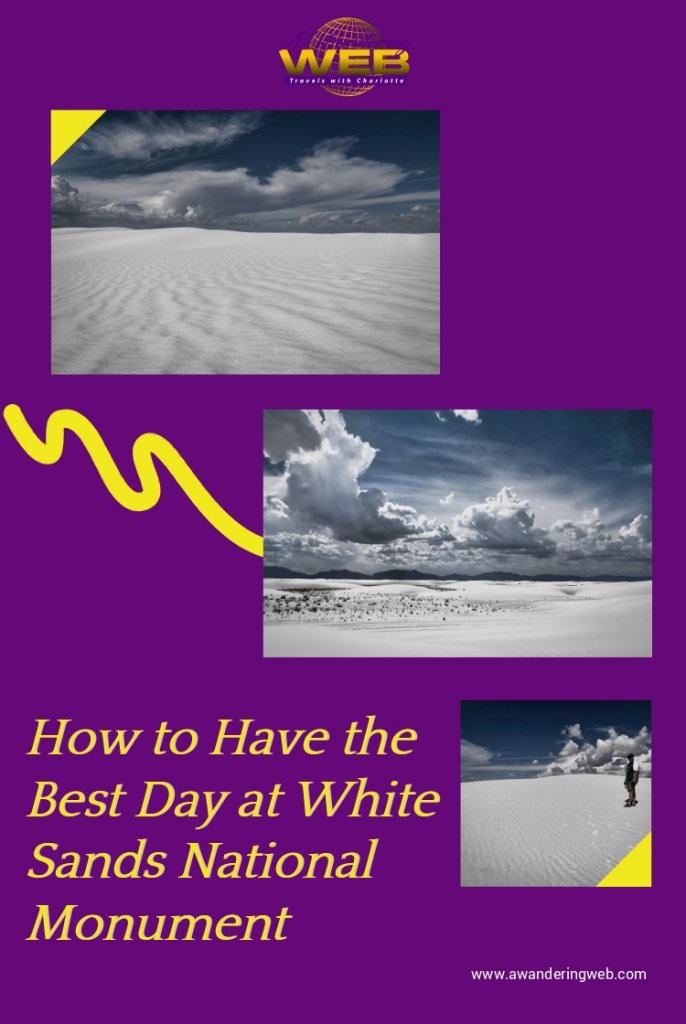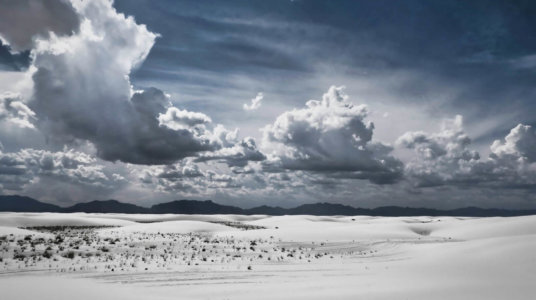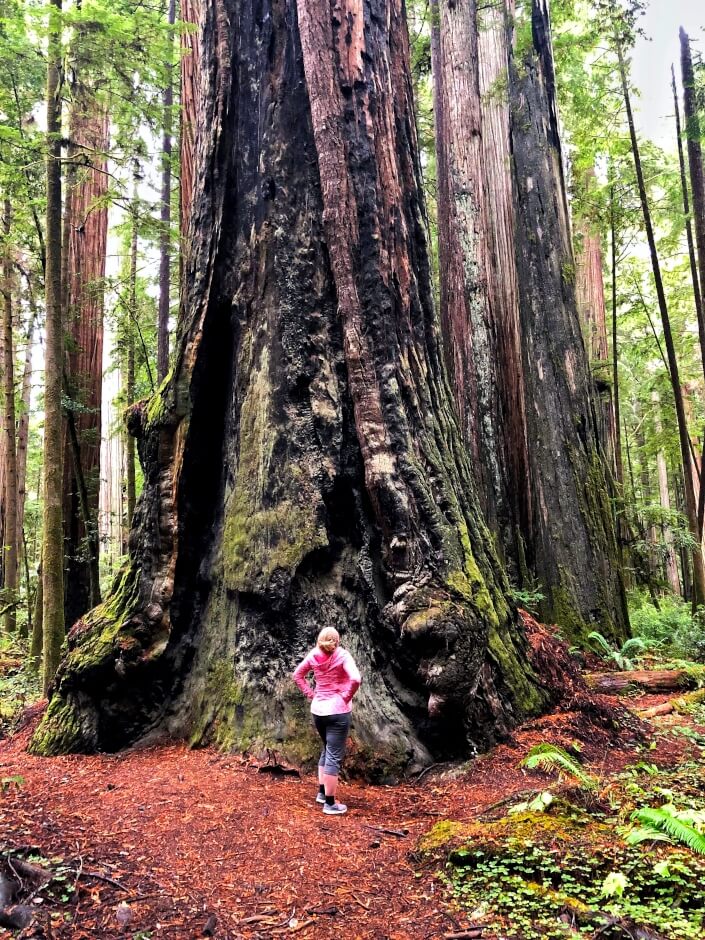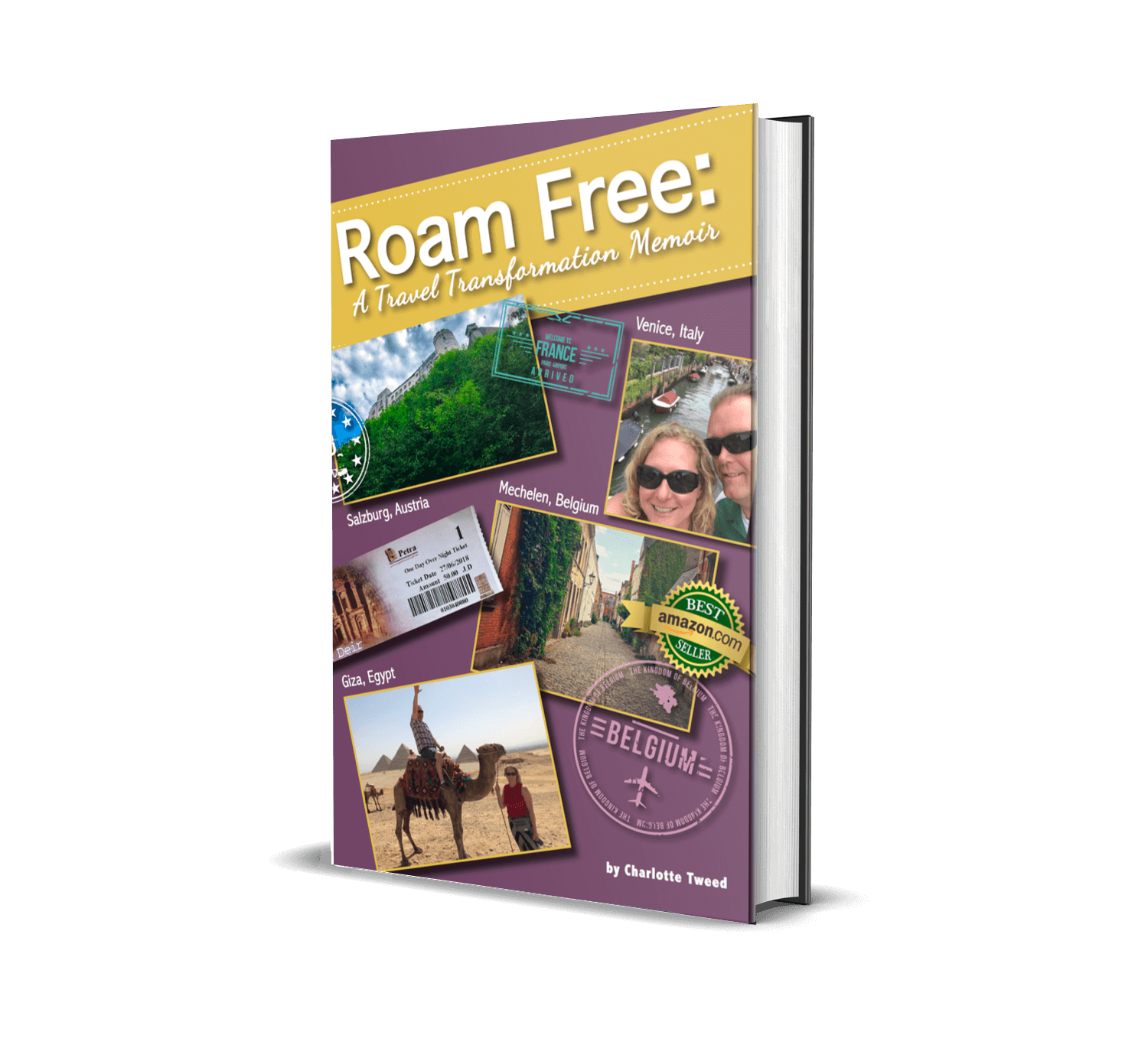
Even though many of our travel plans are on hold right now, we will continue to share stories that we hope will offer inspiration for future adventures.
Imagine stepping into a real-life mirage. Dazzling white gypsum sand dunes shimmer like snow beneath your feet. Specks of tiny twinkling stars in the sand reflect the blazing hot Chihuahuan Desert sun. You step onto the first sand dune and expect to hear the crunch of snow beneath your feet. Instead, your feet sink ever so slightly into the pristine sand. Your system is shocked as your mind expects it to be a cold winter climate as the sand is an illusion of snow. But, it’s not snow or the arctic region. It’s the desert and it’s hot. You are about to discover why White Sands National Monument in New Mexico is one of the most unique National Parks in the United States of America.
This post contains affiliate links; if you click through and purchase something I may receive payment.
Interesting Facts About White Sands National Monument
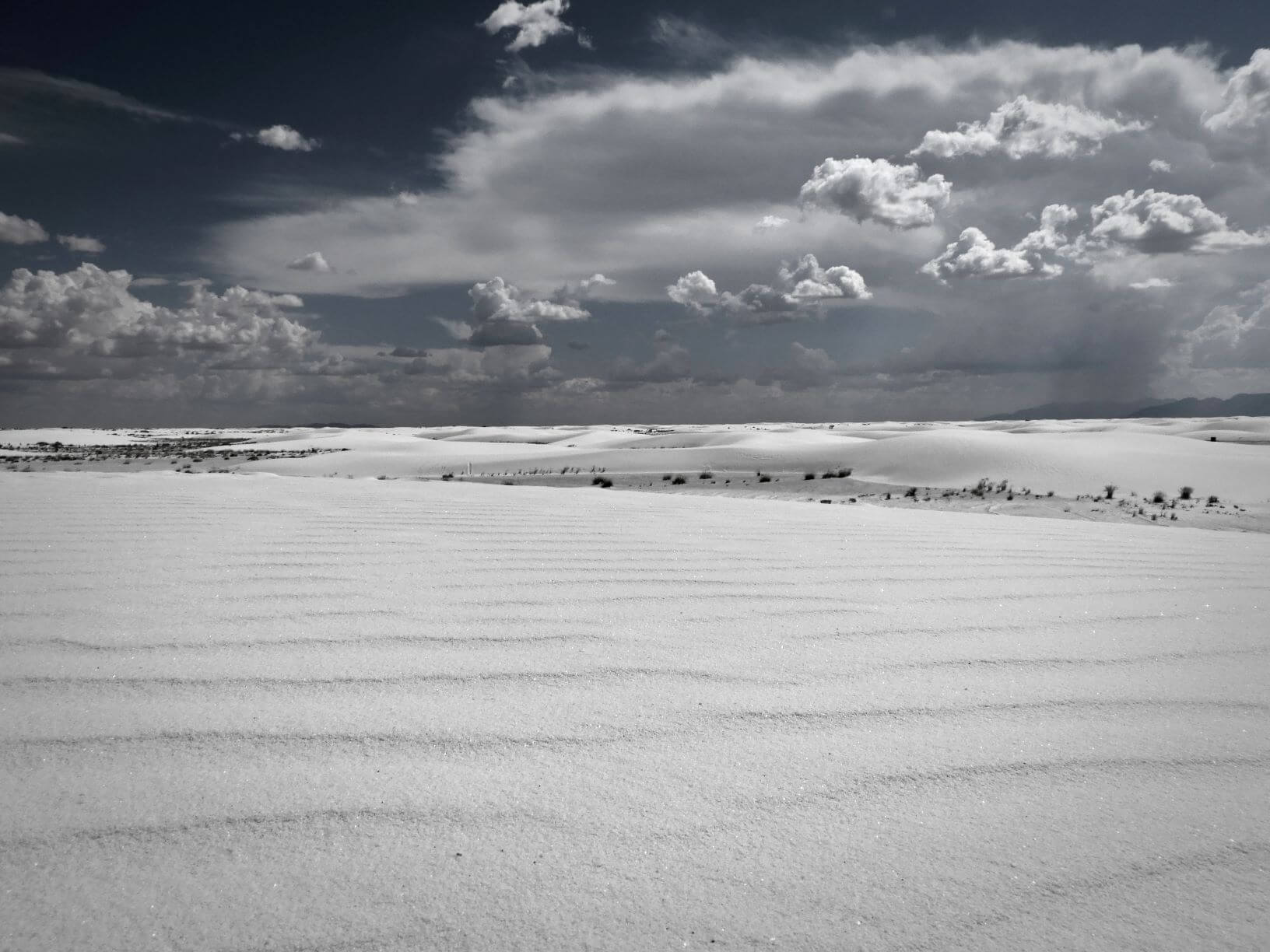
Covering 275 square miles (443 square kilometres), the White Sands are the largest gypsum sand dune in the world. Despite the white sea of vastness, some plants and animals thrive in this odd oasis in the desert.
President Herbert Hoover proclaimed the White Sands to be a National Monument in 1933. During World War II, the US military tested weapons in the dunefield beyond the park. In 1945, the first atomic bomb was detonated at Trinity Site, 100 miles (160 kilometres) north of the monument. The area is still an active missile testing site today. Before you visit, it is imperative to check testing dates to ensure the roads entering the White Sands National Monument are not closed to visitors. Check here for current closures.
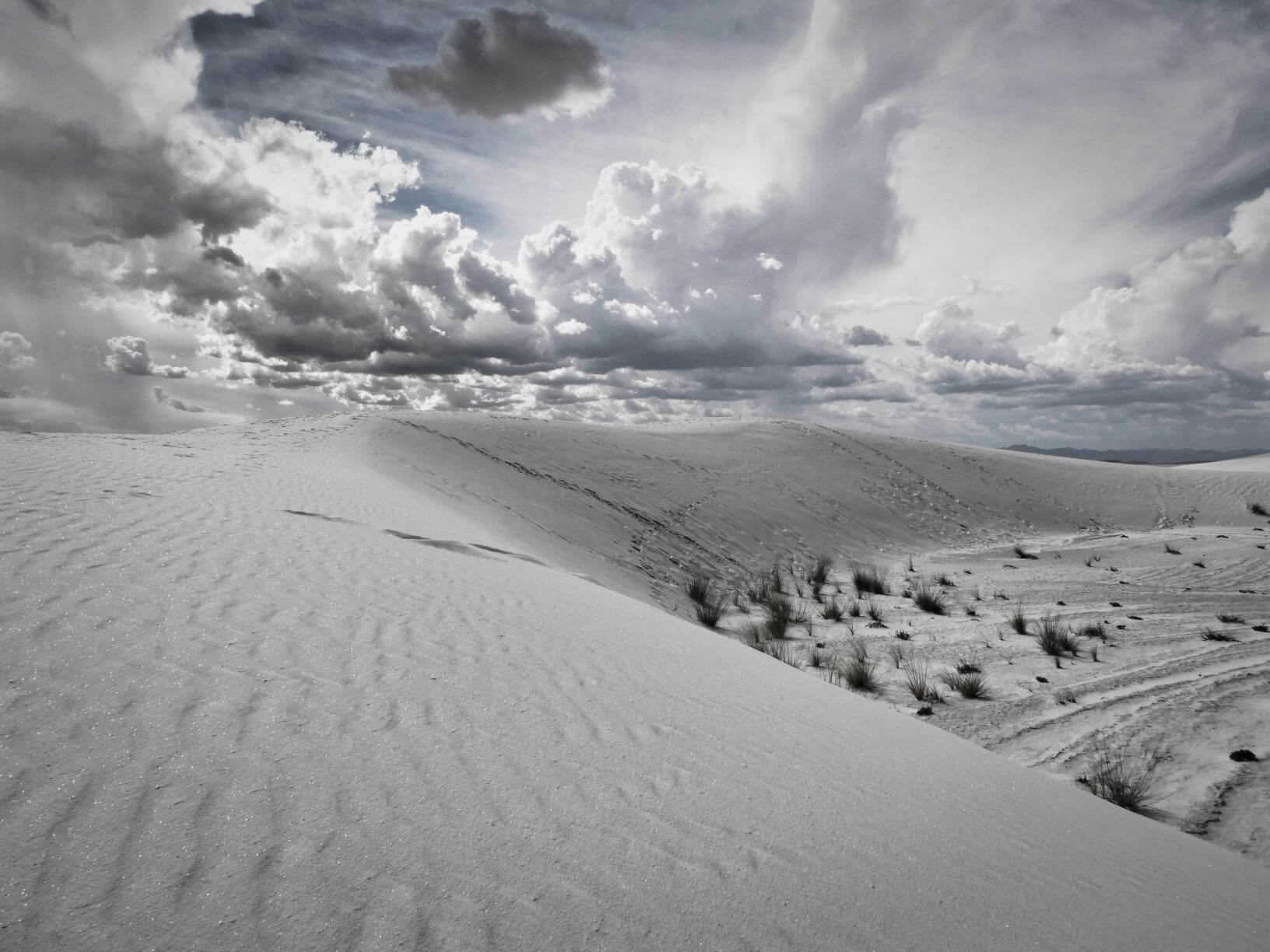
How did this shimmering, white blanket of sand appear in the middle of a desert? Answer: it is gypsum from an ancient sea. When the Permian Sea retreated millions of years ago, it left behind deep layers of gypsum. Mountains rose and carried the gypsum high. Later, water from the melting glaciers dissolved the mineral and returned it to the basin. Rain and snow continue the process today. Steady, strong southwest winds keep the gypsum sand moving, piling it up and pushing massive dunes into various shapes and sizes.
Why does the sand not blow away? Underneath your feet, natural glue holds the huge dunefield together. The natural glue is water. Water seeps down inches below the surface. The moisture keeps the dunes from blowing away. The difference between gypsum dunes and regular sand dunes is that water is held in the sand during the longest droughts. The water becomes older and saltier toward the centre of the dunefield.
Where to Stay at White Sands National Monument
Visiting White Sands National Monument Map
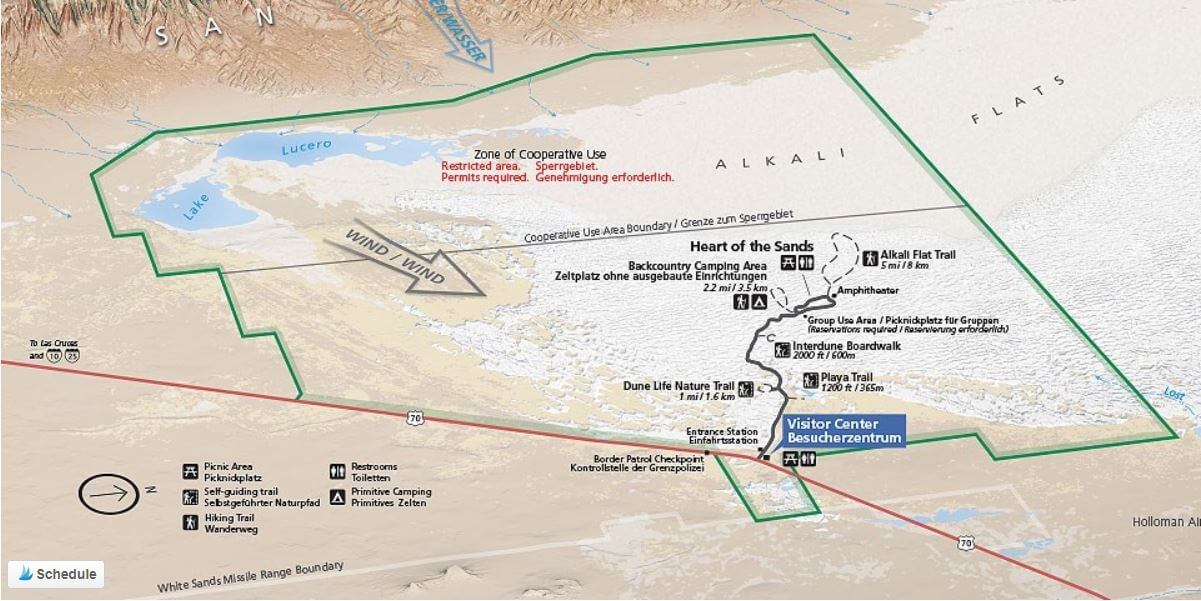
The Best Time to Visit White Sands National Monument
Temperature and weather vary greatly throughout the year in White Sands. Check here for White Sands National Park’s current weather forecast conditions.
1. September through November
The latter part of the year brings the most comfortable temperatures and stable weather in the park. However, September can be rainy late into the month. Daytime temperatures average 80ºF (27ºC), with a low of 65ºF (18ºC). Evenings are cooler, averaging around 40ºF (4ºC). During these months, days are typically sunny with light winds. Therefore, even with the cooler temperatures, September feels hot due to the reflection of the sun off the glassy white sand.
2. June through August
Daytime temperatures average 95ºF (35ºC) in the summer, with some days reaching as high as 110ºF (43ºC). Talk about hot. Evenings are cooler, ranging from 50-65ºF (10-18ºC). Ah, relief! With the added brilliance of the white sand and reflection of the sun, days can be scorching in the summer months.
The rainy season begins in early July and lasts into late September. These months bring the majority of annual 10 inches (25.4 cm) of precipitation. Late afternoon and evening thunderstorms are common.
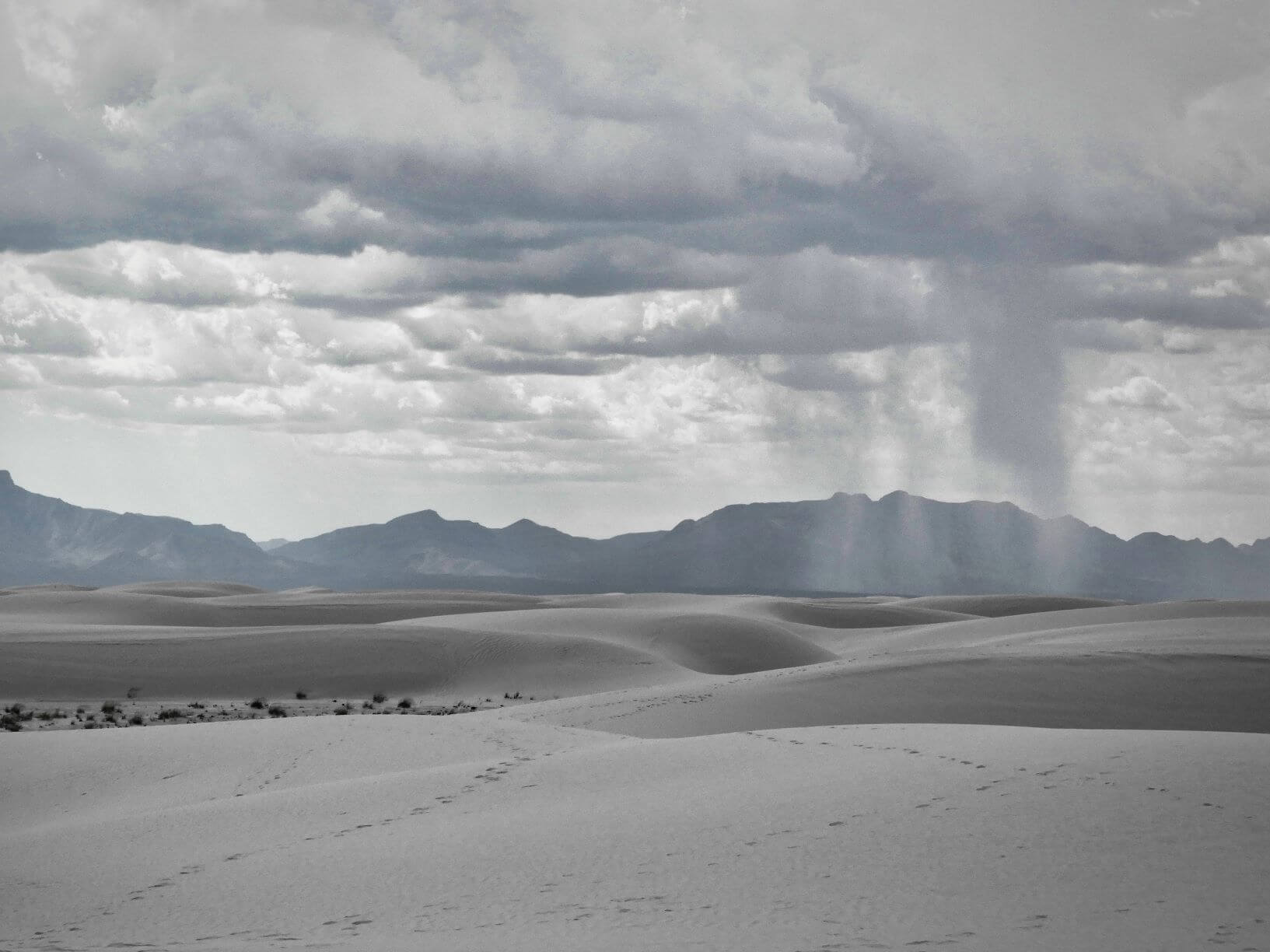
3. December through February
Daytime temperatures average 60ºF (16ºC) in the winter. Evenings are cold, averaging around 23ºF (-5ºC). The occasional winter storm will bring rain and limited snow. How interesting it would be to see if you could tell the difference between the snow and the sand since the sand already bears a remarkable resemblance to fresh snow.
4. March through May
Daytime temperatures average about 75ºF (24ºC) in the spring. Evenings are cool, averaging around 40ºF (4ºC). Spring brings high winds up to 50 mph (80 kph). Sunny days with strong windstorms are common. Picture being caught in a sandstorm here. It would be like a winter blizzard only with the sand being grittier, providing a natural exfoliation to your skin and it would get into every crevice of your body. Do you due diligence and pick a day with an outstanding weather forecast.
Getting There and Getting Around

Entrance to the White Sands National Monument is on US 70, 15 miles (24 kilometres) southwest of Alamogordo and 54 miles (87 kilometres) east of Las Cruces. Moreover, expect to be stopped at a border patrol checkpoint so have your passports handy. Upon arrival at the monument, stop at the visitor centre and fill up your water bottles before you begin exploring. It is the only place to get water at the monument. You do not want to run out of water.
Hiking
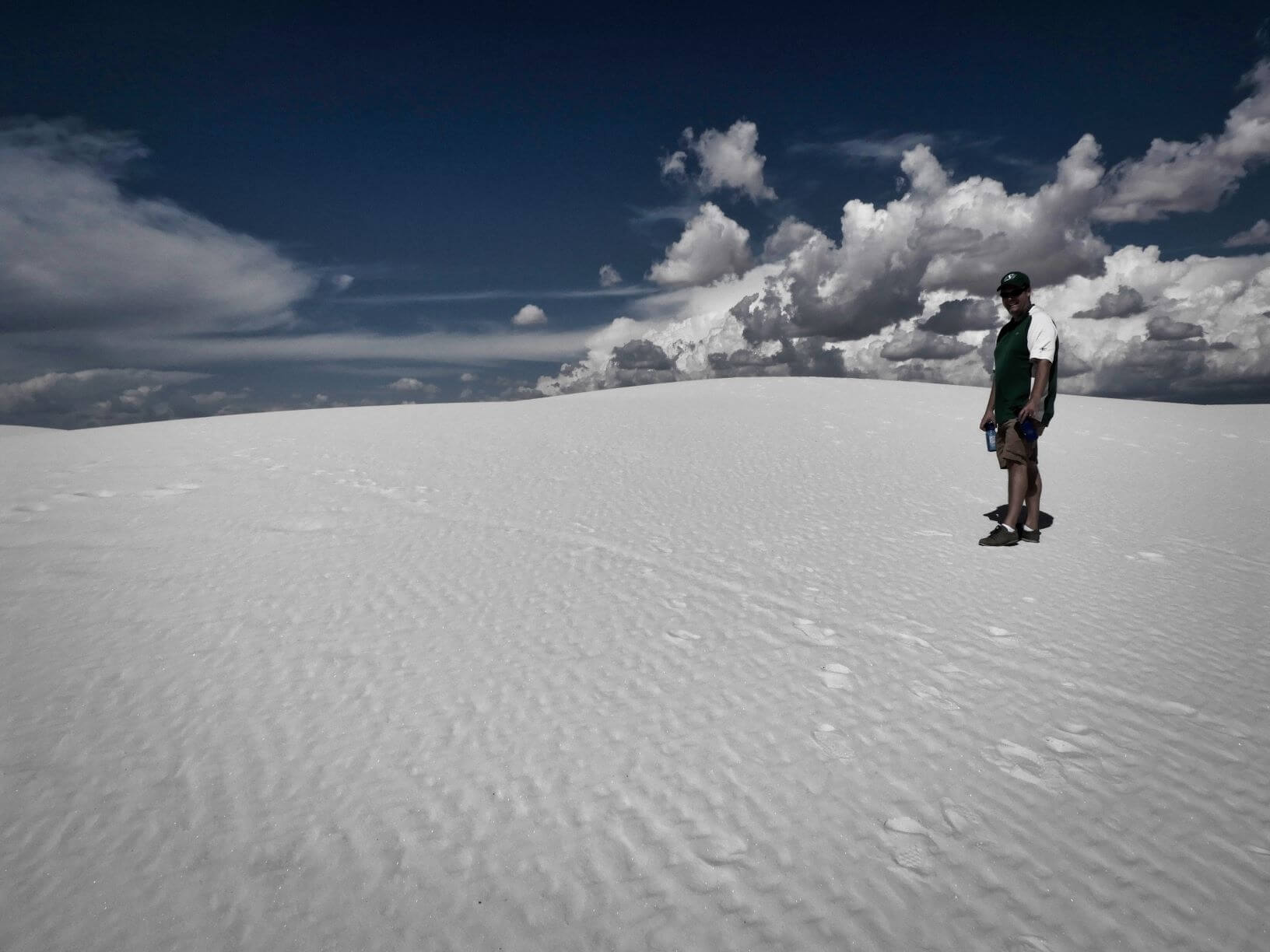
First, while hiking the trails of the dunes, always, always keep landmarks in sight. The ever-shifting dunes can change drastically and cover your footprints—hiding the direction back to the main drive. People have died while visiting the White Sands because they strayed too far and could not find their way back.
Second, sunglasses, a hat, and sunscreen are a must.
Third, do not tunnel into the dunes. They can collapse and suffocate you.
Fourth, do not touch any strange objects while hiking any of the trails. Sometimes military planes flying over will drop strange objects on the dunes that could be dangerous.
Fifth, do not rely on GPS to find your way. The military tests close by can affect satellite signals for hours. Make your number one goal to make it out alive.
And last but not least, please, do not leave or bury your trash. Leave no trace behind but your footprints.
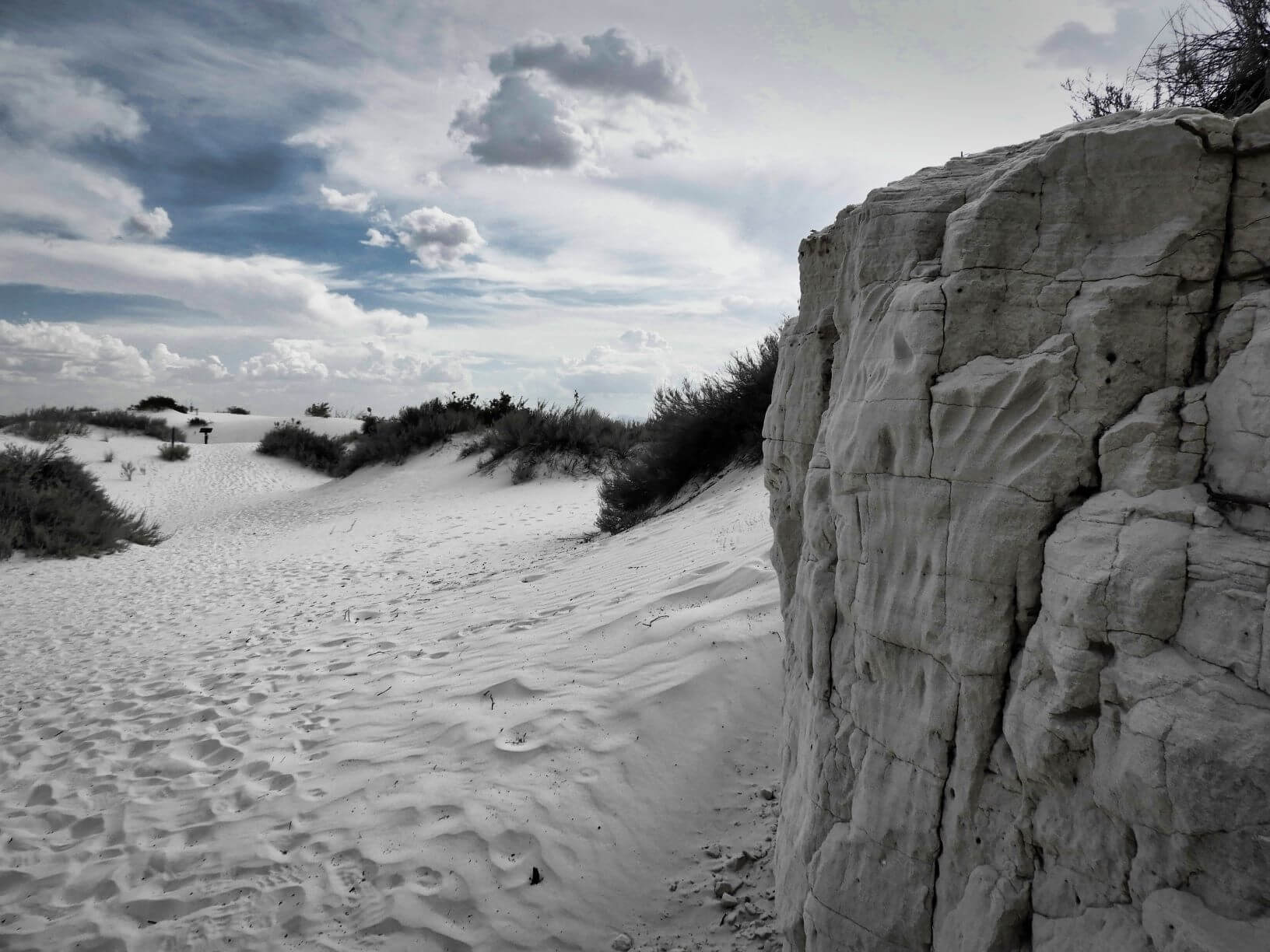
What should you do if you have 1-2 hours?
- Stop at the visitor center and get your park map.
- Follow Dunes Drive into the heart of the dunes. Roadside exhibits and self-guiding trails show you the secrets of the sands.
- Have a picnic at the numerous shaded picnic tables. There are grills at the stops as well. Restrooms are available but remember, there is no water.
- Take a sled and slide down the dunes like they are snow. Sledding in shorts would be a refreshing change compared to sledding in a snowsuit.
What should you do if you have a half-day?
- Hike Alkali Flat Trail, located at the end of Dunes Drive. The roundtrip is 5 miles (8 kilometres). This trail is not flat. You will be hiking hard up and down dunes the entire way. Wind, temperature and lack of humidity can make hiking this trail even more difficult. At times, you may be the only hiker on the trail. Follow the trail markers around the flats. If you cannot see the next marker, turn back as your footprints can be covered quickly.
- Explore Interdune Boardwalk. This easy trail is 1,250 feet (365 metres).
- View the different flora and fauna on Dune Life Nature Trail. This 1-mile (1.6 kilometres) trail has much foliage and is your best chance to view wildlife.

What should you do if you have a full day?
- All the above, plus viewing the exhibits and the movie at the visitor center.
- Partake in park programs or ranger-led activities.
- Visit the bookstore and gift shop.
- Overnight camping in the backcountry is available. Check with park rangers for assistance.
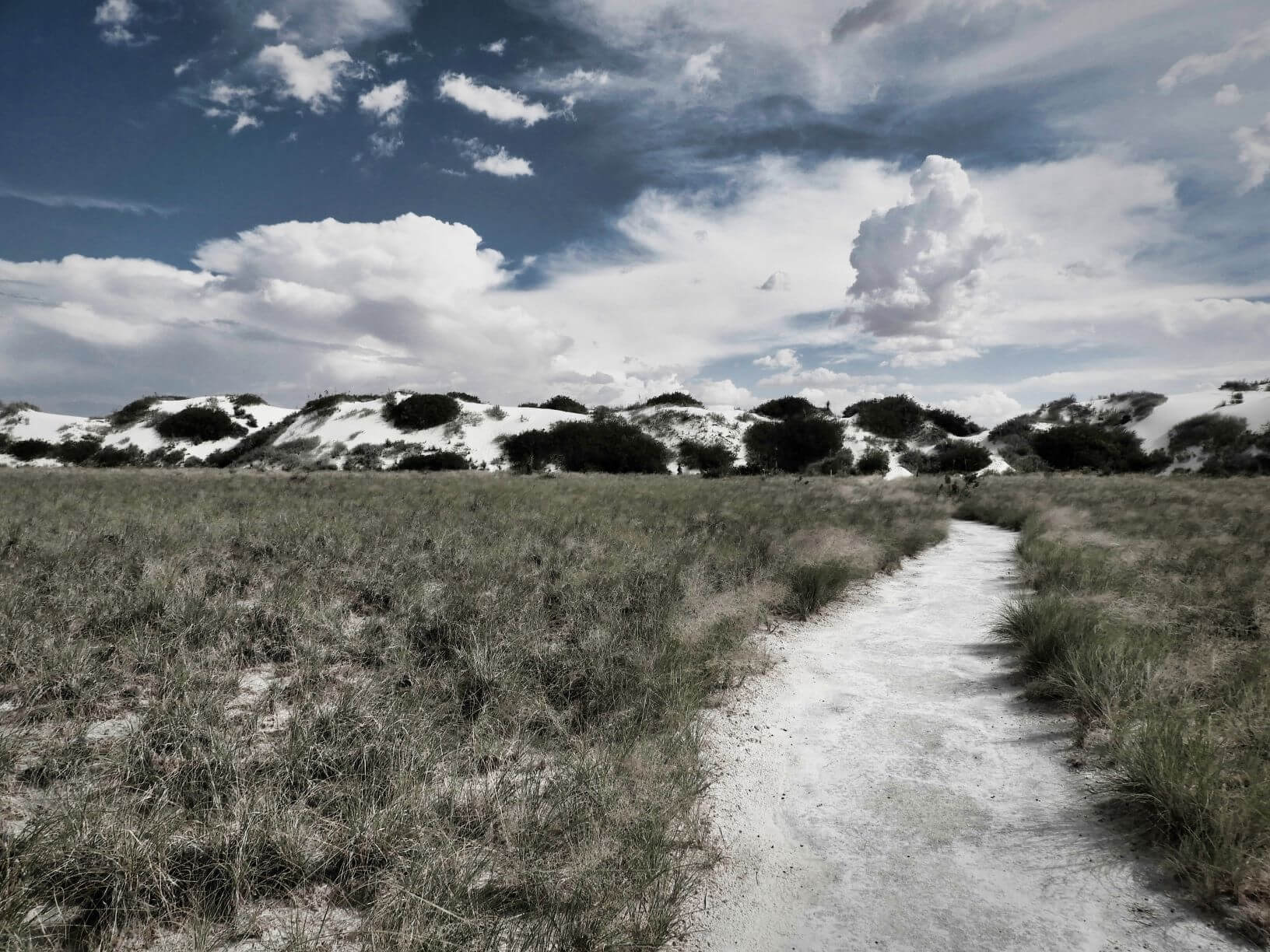
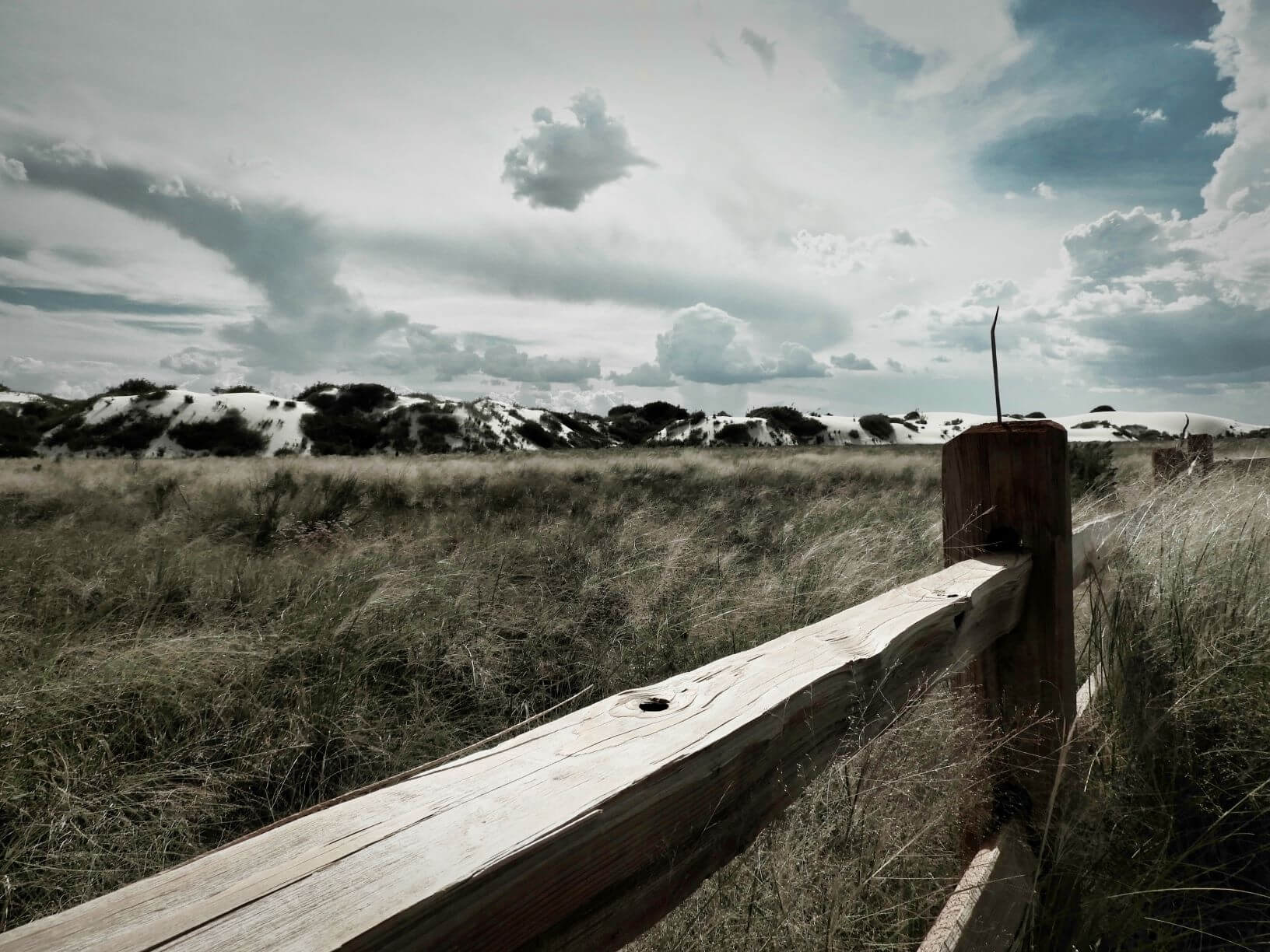
How Much Does White Sands National Monument Cost?
Park entrance fees are payable at the entrance station located on Dunes Drive. Costs are in USD:
- $25 per vehicle
- $15 per person (only charged if there is one person in the vehicle)
- $20 per motorcycle
- $45 White Sands Annual Pass
Small Town Travel Tip: If you plan on visiting numerous National Parks in the United States within the year, it is highly recommended you purchase America the Beautiful National Parks Pass. The annual pass is $80 so it pays for itself if a family per vehicle visits three or more parks a year. The pass is valid one year from the month of purchase.
The White Sands National Monument is a place to reflect, enjoy nature, and let your imagination run wild as you are swept away to another galaxy. Relax, have fun, and enjoy your day. Don’t get lost. Don’t run out of water. Don’t get sunburned. You will have the best day at White Sands National Monument ever.
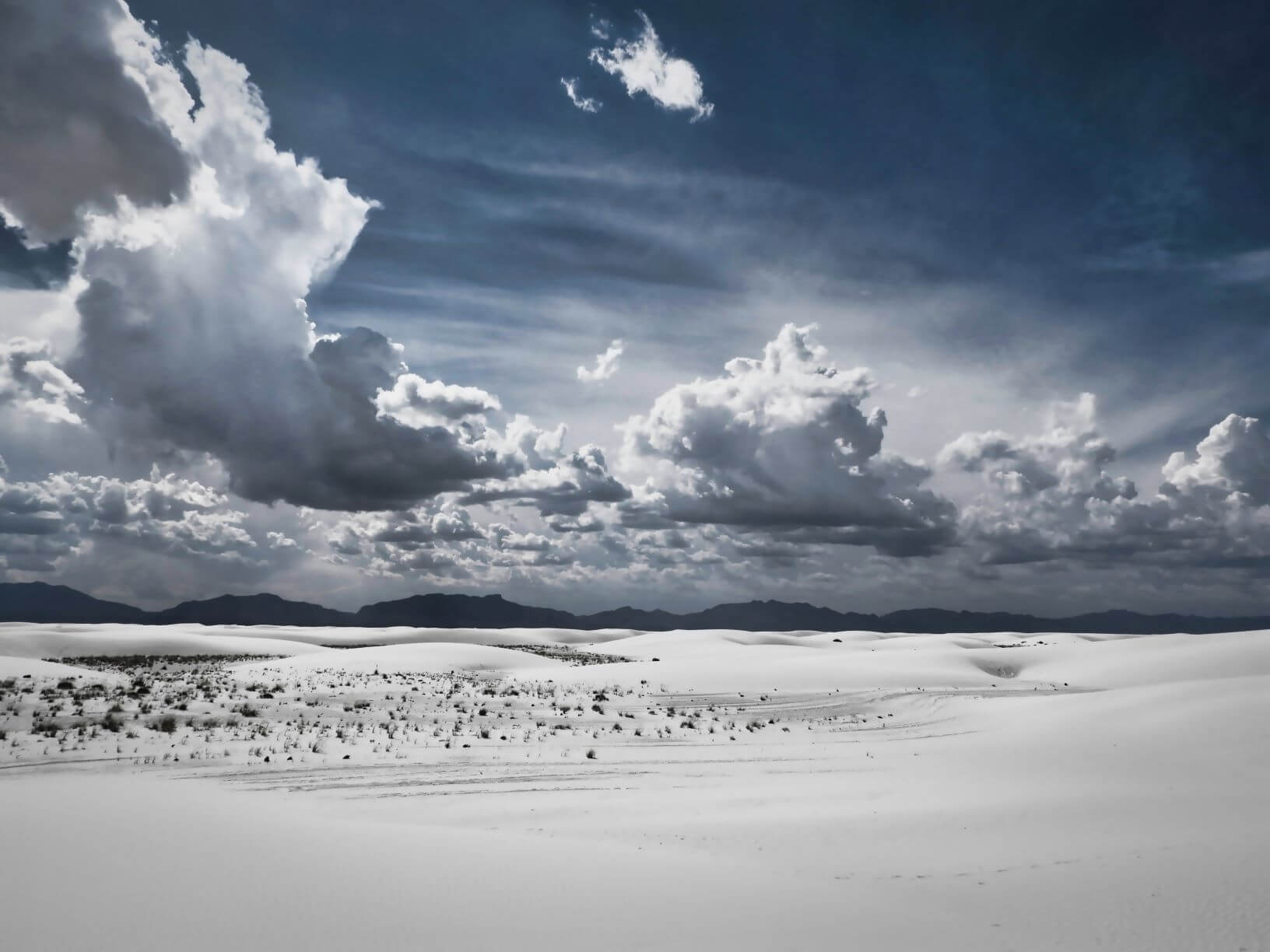
“Everybody needs beauty as well as bread, places to play in and places to pray in, where nature may heal and cheer and give strength to the body and soul alike.“ John Muir, Father of the National Parks
All pictures in this post are taken by Charlotte, yours truly, as always, unless otherwise stated.
Roam Free is a deeply personal and often hilarious travel memoir that pulls you in to the wild and woolly ride of my epic travel adventures. If you loved Peter Mayle’s A Year in Provence, you’ll delight in Roam Free’s sweetly innocent deep dive into a life of untethered long-term travel. Get your copy on Amazon and become inspired today.
“I just finished your book and I wrote a great review on Amazon. Congratulations on your book, your blogging career, and mostly on your courage to step out of the box then burn the damn box!! Your book is inspiring. Bravo.” – Irene Cabay
Get Your Custom-Built Itinerary:
Want to make your own adventure travel memories but don’t know where to start? A Wandering Web Travels can help you plan and book your bucket list travel today.
Enter for your chance to win a FREE trip! *Terms and conditions apply.*
Book Your Flight and Car Rental:
Find cheap transportation by using Kiwi.com. This search engine combs websites and airlines around the globe to become the ultimate travel hack.
Book Your Accommodation:
You can book hotels, apartments, resorts, villas, B&Bs and guest houses at Booking.com! They consistently return the most economical rates for guesthouses and cheap hotels.
Like surprises? Try Hotwire.com and Save up to 60% off 4+ Star Hot Rate Hotels!
Always been curious about Airbnb but afraid to try? Now you can check them out and earn up to $62 CAD off your first trip!
Check out our world recommendations page on Where to Stay!
Book Your Small-Group Tour, Activities and Attractions:
For the best small-group tours check out G Adventures’ Insanely affordable tours!
Viator is another great option so don’t miss out! Guaranteed lowest prices on tours and activities.
Don’t Forget Travel Insurance:
Travel insurance will protect you against illness, injury, theft, and cancellations. It’s comprehensive protection in case anything goes wrong. We like World Nomads because they have great rates and cover a range of adventurous activities.
P.S. – If you’ve found our website helpful and like to book travel yourself, please consider booking your next trip through the links on our Resources Page. We have personally used the companies listed there in our own travels. By booking through these links, the small commission we earn helps us keep the content up to date, expand our resources, and keep the website community supported.
Mission statement: Transform your life with travel—one destination, one adventure, one story at a time.
